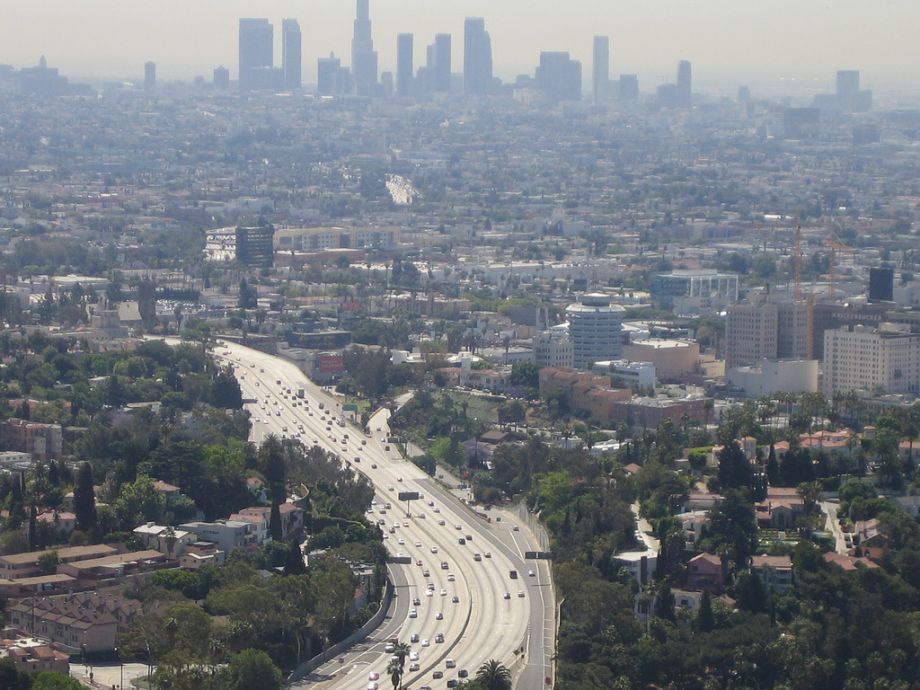To read Hamida Kinge’s recent feature article about the air pollution problem in America’s cities, click here.
Smog kills. Just ask any E.R. doctor or air quality expert. And many — including states, scientists and environmental groups — are not happy with the nation’s current smog standards, so many that the E.P.A. recently proposed tighter regulations for the pollutants that cause smog. If approved, the new reg will have a significant impact on the health of millions of Americans. The E.P.A. estimates that it will save 12,000 lives per year from premature deaths from heart and lung disease, and that thousands of nonfatal heart attacks and cases of bronchitis and asthma will be prevented.
Here is what the EPA is proposing: that the ground level ozone (smog) limit be set anywhere from 0.060 to 0.070 parts per million. In 2008, the Bush administration set the limit for smog at 0.075 parts per million – a standard that the EPA’s scientific panel warned was too weak. If the new proposal is approved, the changes won’t take effect overnight – the new rule wouldn’t go into effect until 2014. And the agency is allowing two decades for compliance. To boot, regions with the worst smog problems, like Southern and Central California, Houston, Texas, and the Northeast, would have even longer to comply.
The new smog rule is expected to be costly: Many counties across the nation that are now in compliance will become out of compliance, and will need to use new technologies to reduce smog-producing emissions from coal-fired power plants, manufacturing plants and motor vehicles. The penalties for being out of compliance, as the New York Times reported earlier this month, will include fines and loss of federal highway financing. The E.P.A. estimates the cost to industry will be in the area of $19 to $90 billion annually by 2020, though some say those estimates are high.
Next American City recently spoke with Janice Nolen of the American Lung Association to get their reaction to the proposal. The association has been a vehement clean air watchdog for decades. Nolen is the Assistant Vice President of National Policy and Advocacy. (Pictured at right; photo courtesy of the A.L.A.)
Next American City: Can you say specifically how the A.L.A. may have impacted the E.P.A.‘s decision to reconsider their 2008 smog decision?
Janice Nolen: We took them to court. We filed [a petition] against them in May 2008 in the U.S. Court of Appeals for the District of Columbia Circuit. We had agreed in the spring of 2009 to allow time for the new Administrator to review the case and see if she wanted to reconsider the decision her predecessor made. We agreed to allow E.P.A. to stay the case as of September 16, 2009 when the E.P.A. filed [smog standard reconsideration] papers with the court.
How does the A.L.A. feel about E.P.A.‘s proposal for the new standards?
The Lung Association is pleased that E.P.A. has reconsidered their 2008 decision. We are urging them to select the most protective level in the range they are considering, 60 parts per million. As we said in our statement, “With today’s announcement, E.P.A. is following the overwhelming evidence that our nation needs a stronger ozone standard. E.P.A. owes this protection to the millions who live where ozone smog sends children to the emergency room and shortens the lives of people with chronic lung disease.”
How does the A.L.A. foresee the change (if approved) will affect health care costs?
We have not calculated costs. E.P.A.’s calculations of the dollar value of the benefits are based on public health impacts, which include avoided E.R. visits, physician visits and medical expenses. But those are not the only benefits calculated. They include the value of lives saved, which is not a “health care” cost issue.
Do you think the costs to enforce the new standard will be burdensome and costly to states and counties?
This concern comes up every time E.P.A. reviews any air standard. Historically, we have greatly overestimated the costs to clean up and underestimated the benefits before the measures take effect. However, when you look at the history of clean up measures, benefits always greatly outweigh costs. In the annual analyses that the White House Office of Management and Budget (O.M.B.) prepare in their report on “unfunded mandates” to Congress, benefits to reduce air pollution always far outweigh any costs. The most recent estimate of the annual cost and benefits of all E.P.A. air regulations is here. They looked at the benefits and costs of all air regulations between October 1, 1998 and Sept 30, 2008 in 2001 dollars and found that the benefits outweighed the costs by a range of roughly two to one to 19 to one. The Bush Administration O.M.B.’s last similar review was in January 2009. They calculated that the annual benefits outweighed costs at least three to one to as much as 22 to one between 1997 and 2007.
How do you think industry should address their costs — they will need to add expensive technologies to lower their smog output. Do you think those prices will end up affecting gas prices and utility bills (from coal-powered electricity)?
First, the pollution we’re talking about is killing people and sending children to the emergency room because they cannot breathe. They are already paying a proven higher price in health and lives. Nearly 40 years of evidence shows that the benefits of cleaner air far outweigh the costs to clean up.

Hamida Kinge has written about everything from food security to ocean acidification to luxury cell phones. She was a 2009 fellow of the Scripps Howard Institute on the Environment and a 2008/09 reporting fellow of the Metcalf Institute for Marine & Environmental Reporting. She has contributed to Next American City, Grist, Philadelphia City Paper and U.R.B. domestically as well as Europe-based magazines Essential Macau and Straight No Chaser. For the past year, she has been teaching English as a foreign language to international students and business professionals. Hamida has also been a volunteer English tutor for the International Center in New York.



_920_518_600_350_80_s_c1.jpg)












